Showing Spotlights 145 - 152 of 203 in category All (newest first):
 Researchers in Korea have found that rice husks - the outer, protective covering of a rice kernel - can be a source of silicon that can be used for high-capacity lithium battery anodes. Most of today's lithium-ion batteries rely on anodes made from graphite, a form of carbon. There are several candidate electrodes to replace graphite as the anode for lithium-ion batteries and silicon has been recognized as a favorable anode material because its capacity is 3-5 times larger than those of existing graphite anodes. The new work demonstrates that rice husks can be used to produce silicon with an ideal porous nanostructure for use in high-capacity lithium-ion battery anodes.
Researchers in Korea have found that rice husks - the outer, protective covering of a rice kernel - can be a source of silicon that can be used for high-capacity lithium battery anodes. Most of today's lithium-ion batteries rely on anodes made from graphite, a form of carbon. There are several candidate electrodes to replace graphite as the anode for lithium-ion batteries and silicon has been recognized as a favorable anode material because its capacity is 3-5 times larger than those of existing graphite anodes. The new work demonstrates that rice husks can be used to produce silicon with an ideal porous nanostructure for use in high-capacity lithium-ion battery anodes.
Jul 16th, 2013
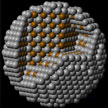 New research shows that ordered intermetallic core-shell nanocatalysts are highly promising designs for fuel cells. These are the newest members to platinum-iron alloy nanocatalysts with such intermetallic core-shell (IMCS) design. Furthermore, on characterizing them after 10,000 cycles, they still retain their structural ordering at the core while the platinum shell got thicker and thicker. Such a static core-dynamic shell (SCDS) regime is being reported for the first time.
New research shows that ordered intermetallic core-shell nanocatalysts are highly promising designs for fuel cells. These are the newest members to platinum-iron alloy nanocatalysts with such intermetallic core-shell (IMCS) design. Furthermore, on characterizing them after 10,000 cycles, they still retain their structural ordering at the core while the platinum shell got thicker and thicker. Such a static core-dynamic shell (SCDS) regime is being reported for the first time.
Jul 8th, 2013
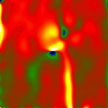 In terms of weight and size, batteries have become one of the limiting factors in the continuous process of developing smaller and higher performance electronic devices. To meet the demand for batteries having higher energy density and improved cycle characteristics, researchers have been making tremendous efforts to develop new electrode materials or design new structures of electrode materials. Researchers have now investigated the atomistic nature of the lithiation mechanism in individual tin dioxide nanowires by in situ transmission electron microscope and complementary density functional theory simulation.
In terms of weight and size, batteries have become one of the limiting factors in the continuous process of developing smaller and higher performance electronic devices. To meet the demand for batteries having higher energy density and improved cycle characteristics, researchers have been making tremendous efforts to develop new electrode materials or design new structures of electrode materials. Researchers have now investigated the atomistic nature of the lithiation mechanism in individual tin dioxide nanowires by in situ transmission electron microscope and complementary density functional theory simulation.
Jun 19th, 2013
 Researchers have come up with various electrode materials to improve the performance of supercapacitors, focussing mostly on porous carbon due to its high surface areas, tunable structures, good conductivities, and low cost. Graphene and carbon nanotubes show great potential but are costly. Researchers in Canada have now reported the successful hydrothermal-based synthesis of two-dimensional, yet interconnected, carbon nanosheets with superior electrochemical storage properties comparable to those of state-of-the-art graphene-based electrodes.
Researchers have come up with various electrode materials to improve the performance of supercapacitors, focussing mostly on porous carbon due to its high surface areas, tunable structures, good conductivities, and low cost. Graphene and carbon nanotubes show great potential but are costly. Researchers in Canada have now reported the successful hydrothermal-based synthesis of two-dimensional, yet interconnected, carbon nanosheets with superior electrochemical storage properties comparable to those of state-of-the-art graphene-based electrodes.
May 15th, 2013
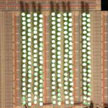 Harvesting unexploited energy in the living environment is increasingly becoming an intense research area as the global push to replace fossil fuels with clean and renewable energy sources heats up. There is an almost infinite number of mechanical energy sources all around us - basically, anything that moves can be harvested for energy. This ranges from the very large, like wave power in the oceans, to the very small like rain drops or biomechanical energy from heart beat, breathing, and blood flow. In an intriguing demonstration, researchers at Georgia Tech have now demonstrated that the technology offered by nanogenerators can also be used for large-scale energy harvesting.
Harvesting unexploited energy in the living environment is increasingly becoming an intense research area as the global push to replace fossil fuels with clean and renewable energy sources heats up. There is an almost infinite number of mechanical energy sources all around us - basically, anything that moves can be harvested for energy. This ranges from the very large, like wave power in the oceans, to the very small like rain drops or biomechanical energy from heart beat, breathing, and blood flow. In an intriguing demonstration, researchers at Georgia Tech have now demonstrated that the technology offered by nanogenerators can also be used for large-scale energy harvesting.
Feb 28th, 2013
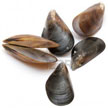 Binders are used in fabricating lithium-ion batteries to hold the active material particles together and in contact with the current collectors. The characteristics of the binder material used are critical for the performance of the battery. In an effort to make a highly functional binder, researchers at KAIST have developed polymers conjugated with mussel-inspired functional groups (catechol groups). Catechol was found to play a decisive role in the exceptional wetness-resistant adhesion.
Binders are used in fabricating lithium-ion batteries to hold the active material particles together and in contact with the current collectors. The characteristics of the binder material used are critical for the performance of the battery. In an effort to make a highly functional binder, researchers at KAIST have developed polymers conjugated with mussel-inspired functional groups (catechol groups). Catechol was found to play a decisive role in the exceptional wetness-resistant adhesion.
Jan 2nd, 2013
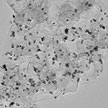 Fuel cells are able to convert chemical energy to electrical energy with little pollutant emission and high energy conversion efficiency. Despite these advantages, the performance of fuel cells depends largely on the oxygen reduction reaction (ORR), which is substantially affected by the activity of the cathode catalyst. Since the sluggish kinetics of ORR is the major factor impeding large-scale application of fuel cells, most research focuses on developing efficient catalysts for ORR.
Fuel cells are able to convert chemical energy to electrical energy with little pollutant emission and high energy conversion efficiency. Despite these advantages, the performance of fuel cells depends largely on the oxygen reduction reaction (ORR), which is substantially affected by the activity of the cathode catalyst. Since the sluggish kinetics of ORR is the major factor impeding large-scale application of fuel cells, most research focuses on developing efficient catalysts for ORR.
Dec 12th, 2012
 The future of electronics will be flexible. Not only will you be able to roll up your iPads and smart phones like a piece of paper, electronic devices will be invisibly embedded in the textiles you wear from baby diapers to doctors' surgical gloves. To realize such devices, equally flexible power sources need to be integrated with the electronic devices. Textile yarns are an obvious choice. Researchers are already pushing ahead with electronic textiles (e-textiles), for instance by coating regular cotton yarns with single-walled and multi-walled carbon nanotubes and polyelectrolytes, thus making cotton fibers conductive. Addressing the power source issue, researchers have now found a simple way to provide cotton with a new function - storing energy.
The future of electronics will be flexible. Not only will you be able to roll up your iPads and smart phones like a piece of paper, electronic devices will be invisibly embedded in the textiles you wear from baby diapers to doctors' surgical gloves. To realize such devices, equally flexible power sources need to be integrated with the electronic devices. Textile yarns are an obvious choice. Researchers are already pushing ahead with electronic textiles (e-textiles), for instance by coating regular cotton yarns with single-walled and multi-walled carbon nanotubes and polyelectrolytes, thus making cotton fibers conductive. Addressing the power source issue, researchers have now found a simple way to provide cotton with a new function - storing energy.
Jun 25th, 2012
 Researchers in Korea have found that rice husks - the outer, protective covering of a rice kernel - can be a source of silicon that can be used for high-capacity lithium battery anodes. Most of today's lithium-ion batteries rely on anodes made from graphite, a form of carbon. There are several candidate electrodes to replace graphite as the anode for lithium-ion batteries and silicon has been recognized as a favorable anode material because its capacity is 3-5 times larger than those of existing graphite anodes. The new work demonstrates that rice husks can be used to produce silicon with an ideal porous nanostructure for use in high-capacity lithium-ion battery anodes.
Researchers in Korea have found that rice husks - the outer, protective covering of a rice kernel - can be a source of silicon that can be used for high-capacity lithium battery anodes. Most of today's lithium-ion batteries rely on anodes made from graphite, a form of carbon. There are several candidate electrodes to replace graphite as the anode for lithium-ion batteries and silicon has been recognized as a favorable anode material because its capacity is 3-5 times larger than those of existing graphite anodes. The new work demonstrates that rice husks can be used to produce silicon with an ideal porous nanostructure for use in high-capacity lithium-ion battery anodes.
 Subscribe to our Nanotechnology Spotlight feed
Subscribe to our Nanotechnology Spotlight feed





